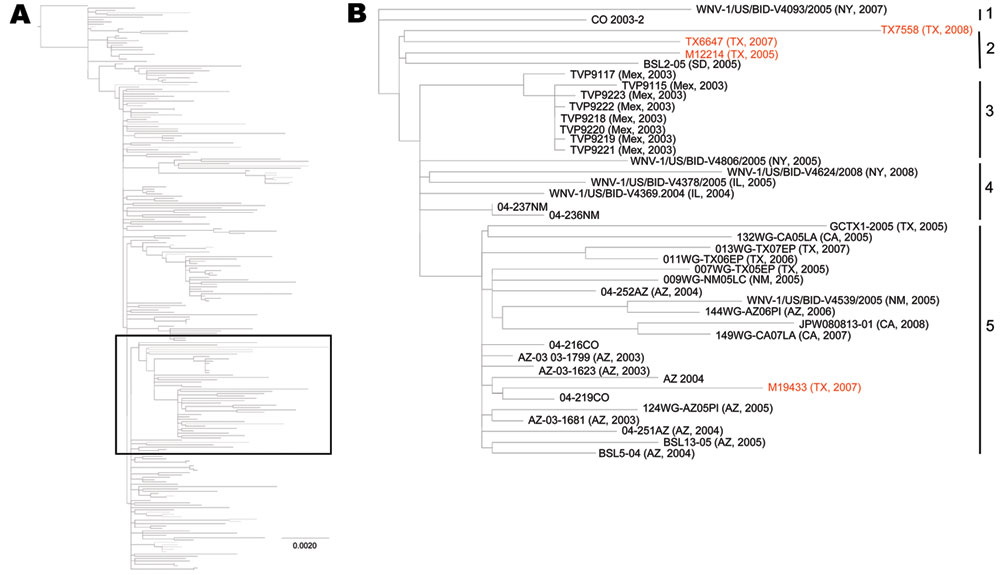Volume 17, Number 5—May 2011
Research
Evolution of New Genotype of West Nile Virus in North America
Figure 2

Figure 2. Maximum-likelihood phylogenetic tree showing all published, full open reading frame North American West Nile virus isolates, 2002–2009 (A), and enlargement showing SW/WN03 genotype (B). Red, isolates sequenced in this study. Scale bar in panel A indicates nucleotide substitutions per site. Numbers on the right in panel B indicate groups.
Page created: August 14, 2011
Page updated: August 14, 2011
Page reviewed: August 14, 2011
The conclusions, findings, and opinions expressed by authors contributing to this journal do not necessarily reflect the official position of the U.S. Department of Health and Human Services, the Public Health Service, the Centers for Disease Control and Prevention, or the authors' affiliated institutions. Use of trade names is for identification only and does not imply endorsement by any of the groups named above.